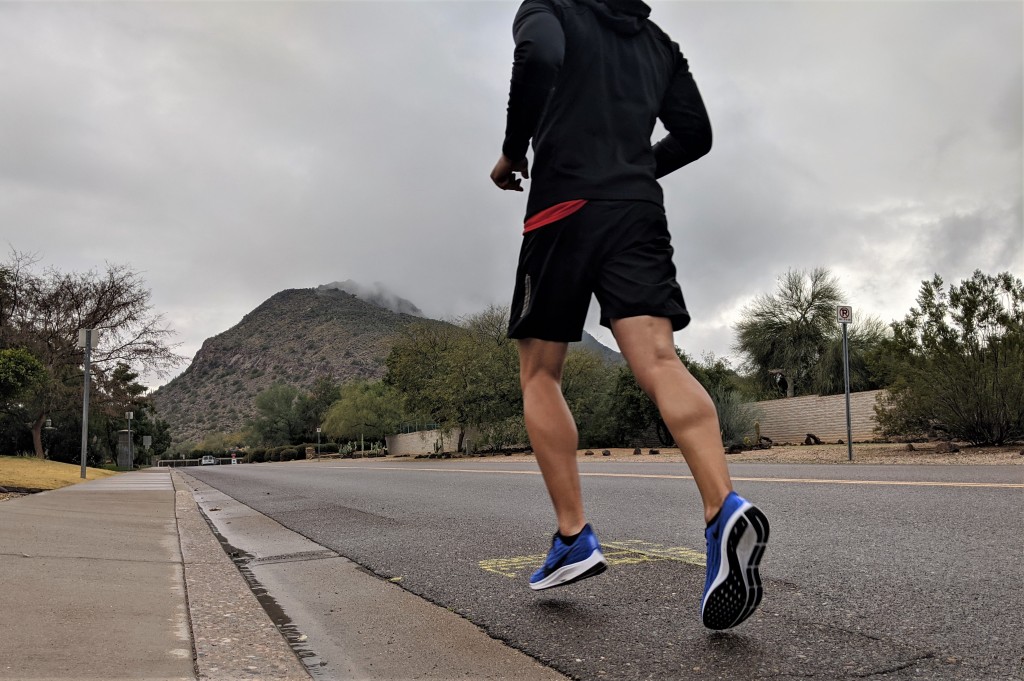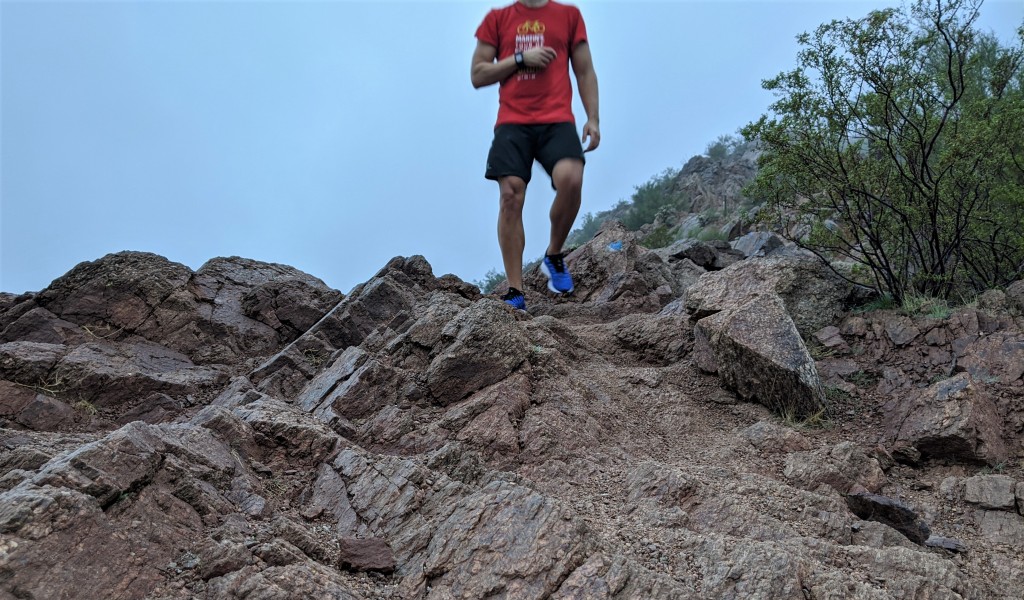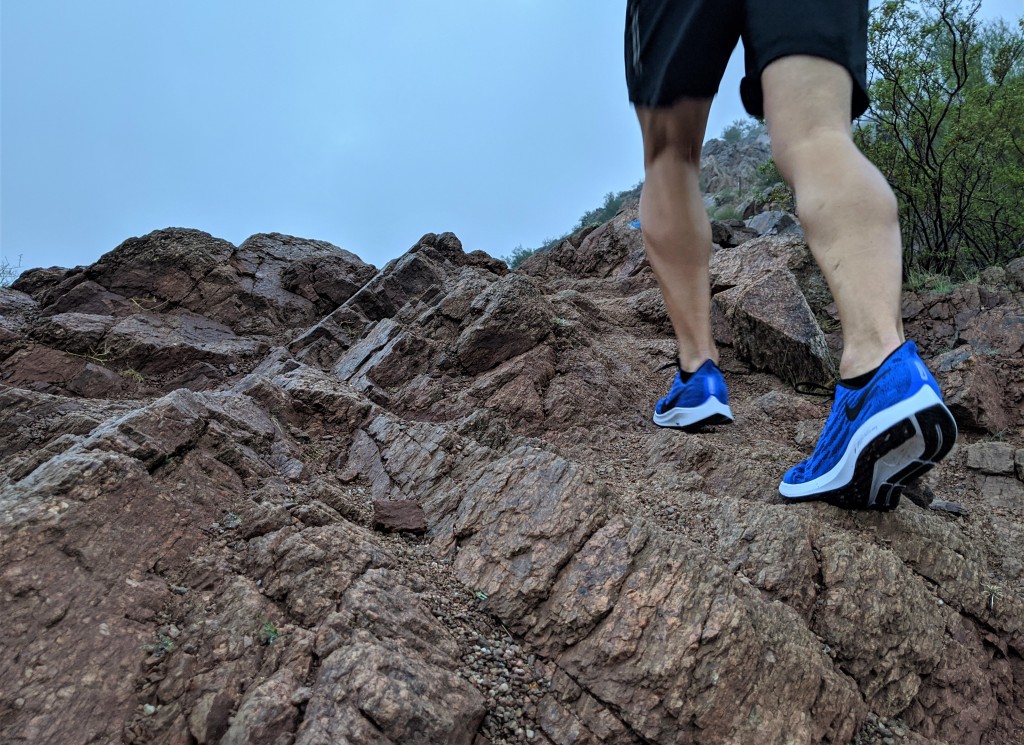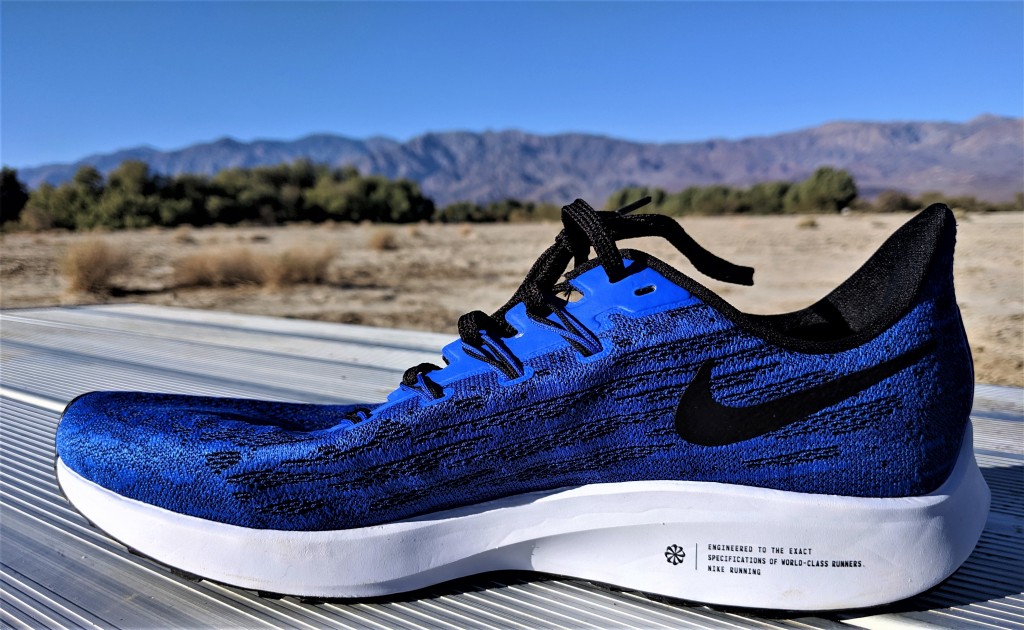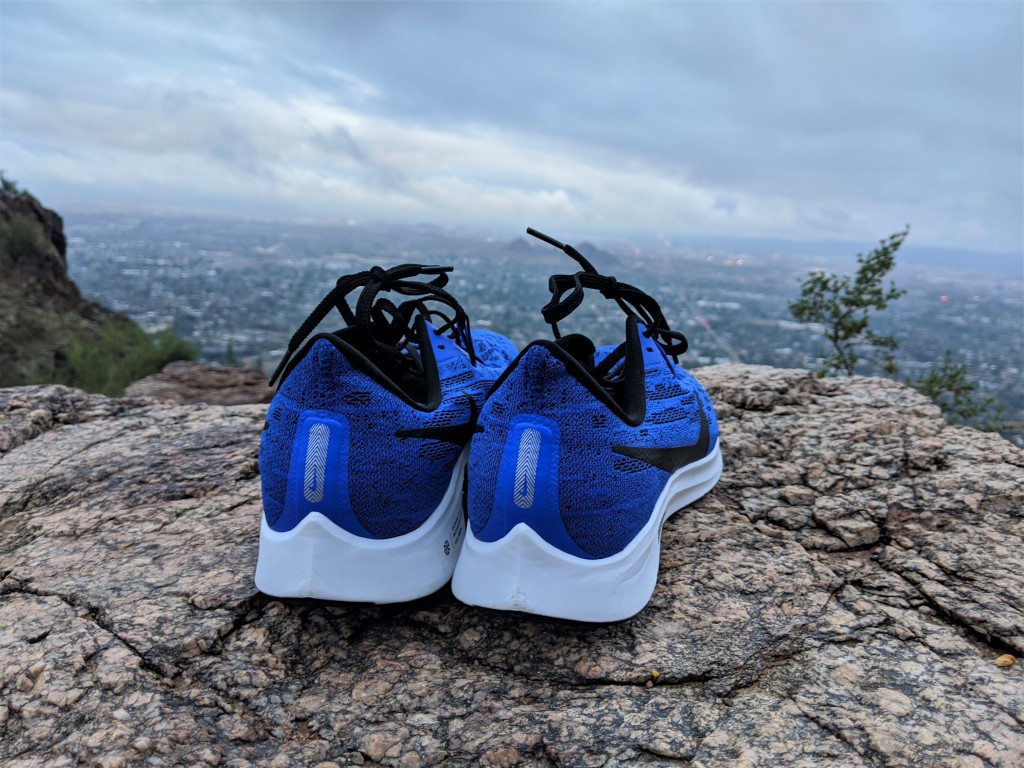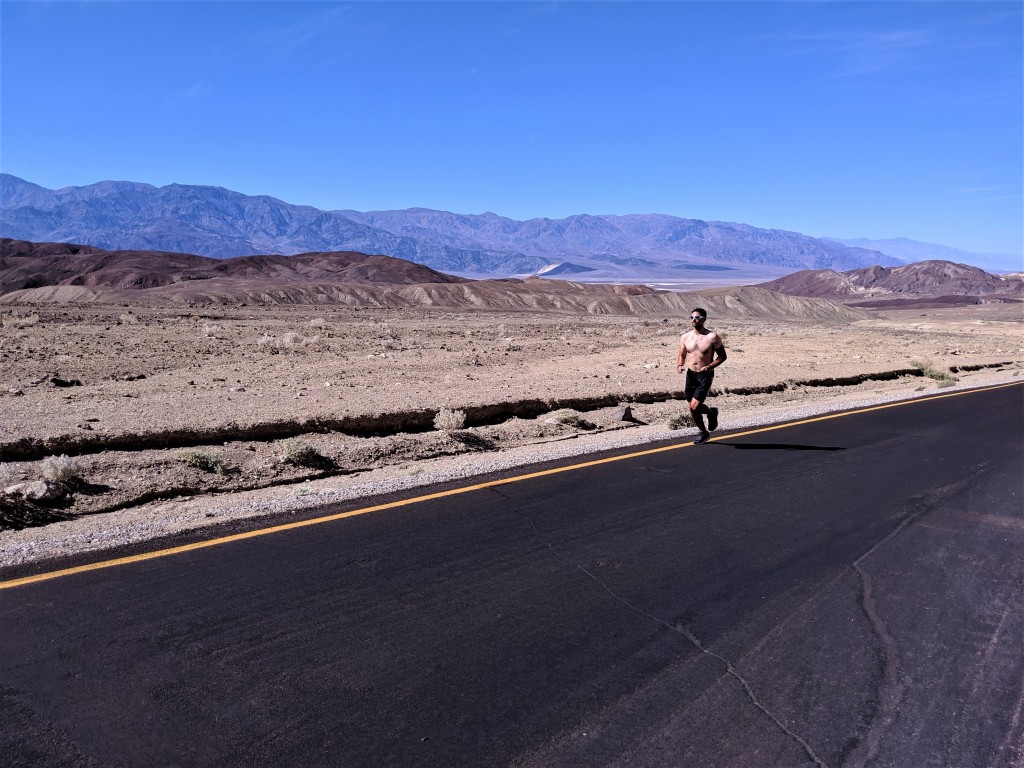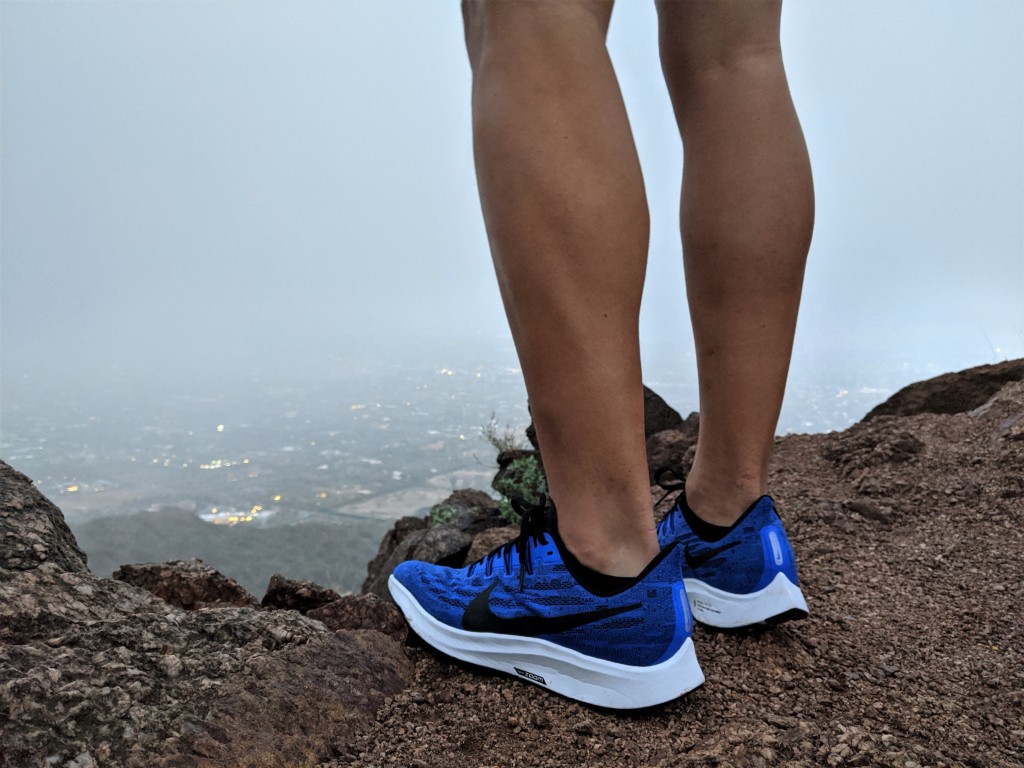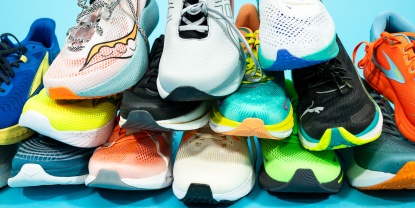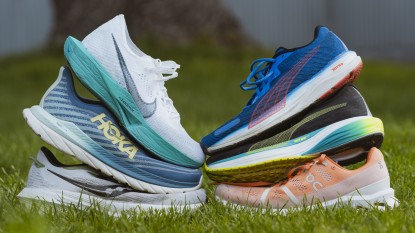During our test period with the Air Zoom Pegasus 36, Nike dropped some new colors, but the design of the shoe remains the same. A current color offering is shown above.
Nike Air Zoom Pegasus 36 Review
Our Verdict
During our test period with the Air Zoom Pegasus 36, Nike dropped some new colors, but the design of the shoe remains the same. A current color offering is shown above.
Our Analysis and Test Results
We spent a lot of time trying to find the faults and feel the performance of the new Pegasus 36. We were pleased to find that they perform even better than the previous version, dropping a little unnecessary material from the upper and making a few other modifications to improve performance. We think just about anyone would have a great run in these, but we're here to dive into the details so you don't find any surprises. Read on to see how they stack up across our measures!
Performance Comparison
Responsiveness
Much like the 35s before them, the 36s have awesome responsiveness, despite this not usually being an area where racing flats excel. Typically it's the stability models or the compensating comfort models that have all sorts of stiff responsiveness. Their light construction requires that they have a good deal of cushioning to dampen the harder smashing that happens at high speeds. That added cushion typically limits the ability of the sole to be as responsive as more rigid, structured soles. That holds true for the Pegasus 36 too, with them performing about as well as can be expected given their natural feel and great comfort.
Interestingly, the most significant responsiveness change comes from the new heel design. Earlier iterations caused comfort problems with the Achilles tendon. This model tapers its collar away from the tendon to mitigate that issue, but in the process, it allows the heel to slip, reducing the shoe's adherence to the foot and losing a bit of steam. To fix that responsiveness issue, you'll have to use the lace eyelets nearest to your foot, which keeps the upper adhered to your foot a little better and mostly solves the problem. Nike will need to come up with a better solution to this problem in future models, but it's still passable for most runners.
Landing Comfort
Sticking the landing can be pretty tough for some designs. Issues tend to be more pronounced when the design anticipates a particular landing style (e.g., heel-strike instead of forefoot). So when runners with a different style wear them, the shoes feel super uncomfortable, and it might even be apparent to the runner that the shoe is not designed for their gait, leaving them to blame the shoe instead of simply looking at the design.
Arguably, the 10mm heel-to-toe discrepancy of the Pegasus line anticipates a heel-strike. There was concern that the design might not accommodate a forefoot strike, but its thick EVA midsole and Zoom Air units placed along the full length of the foot made this a super comfortable lander for any style. Some runners complained that the sole was too stiff for them, but we didn't really agree with that. Plus, you sacrifice responsiveness if you're getting too much cushion. In any case, we feel that the sole is plenty cushy for a speedster.
Weight
Much like the mythical creature these kicks are named after — a flying horse — these sneakers can fly, but earlier versions were as heavy as a horse, almost 10% heavier than the next heaviest racing flats. The updated 36s are even leaner than the previous models, coming down to a competitive 20.2 ounces in a men's 11. Their flymesh upper remains fairly thin, and the slight reduction in upper padding seems to have helped reduce weight.
If weight is a major factor in your decision, there are a handful of slightly lighter trainers that will interest you, but keep in mind that as you drop weight, you tend to drop robustness too. That's another reason we were so happy with these. They do an excellent job of balancing reduced weight with good performance out on the road.
Durability
This is an area where Nike could do a little work. Generally, the design is solid and there aren't any problems there. The one issue we saw come up over and over in online user reviews is the outsole coming off, which is a construction or manufacturing problem. It could simply be a bad batch, but it's a very solvable problem that Nike needs to fix. We didn't see that problem in our personal testing, but it definitely exists for some runners.
Outside of that, the Pegasus 36 has multiple layers of mesh, a Flywire support structure that helps spread flex stress throughout the upper, and a thick rubber outsole that will help it last. It could have some vulnerabilities to wear, like tears in the mesh, but those are pretty universal for this shoe style. It's also worth noting that we did not find any serious trends in degradation in our time with this shoe.
If or once Nike has fixed the outsole adhesion issue, which we don't believe to be widespread, we think that most runners will be satisfied with the durability of the Pegasus 36. As a lightweight racing flat, they're expected to have a flash in the pan life, but they'll last a good while longer.
Upper Comfort
Comfort is a fickle thing to measure. When we look at this category, we consider padding and natural fit during the gait cycle. It's really frustrating to find something that is super padded and feels great in the store only to find that 5 miles into a tempo run you're annoyed by chafing from excessive padding. The Pegasus strikes a great balance between those two worlds. They have just enough collar padding to cushion and guard the foot against the heel counter, making them welcoming to the heel and ankle and compatible with miles of sweater percussion and friction.
The 36 is a bit narrower and leaner than earlier models, which makes it more snug and breathable, but less cushy and supple. Still, the close fit and sockliner go a long way to maintaining its comfort. The Flymesh upper material and smooth Fitsole sockliner fit the foot very well, creating a natural feel that makes the miles much nicer as they go by.
Much like the 35s, this version also has a heel collar that sweeps back and away from the foot to accommodate the Achilles tendon. This improves the comfort, but can actually cause some slippage, which Nike will need to fix in the 37s. However, you can mitigate this problem quite a bit by using the lower eyelets for the laces and lacing them up a little closer. That's not an ideal situation, but the heel thing doesn't upset everyone, and this isn't a terrible workaround for now.
Breathability
The updated upper in the 36 is just a bit leaner than earlier versions, so it's slightly more breathable, without sacrificing too much comfort. That's after re-engineering the Flymesh upper to be more breathable than in earlier versions. The sockliner and multiple layers of upper mesh breathe better in this version. The outermost layer of mesh remains minimally permeable in some parts, particularly on each side of the midfoot, but it's generally better.
Most of the other lightweight racing flats did better in this category, with the top of the scale occupied by speedy flats. Breathability isn't exactly this model's strongpoint, but it's not a deal-breaker. If breathability isn't the absolute most important quality to you, we suggest looking at some of the other great qualities of the Pegasus. If it is a deal-breaker, there are some other awesome breezy shoes in our lineup you might want to check out.
Value
The 36 is a solid shoe. They're everything a runner could want in a traditional running shoe, and they're reasonably priced for all they provide. If they can be found at a good discount, the purchase is even more justified.
Conclusion
We were happy to give the Nike Pegasus 36 our Editors' Choice Award. There were only minor tweaks for this edition, but they still manage to outshine the competition in this leaner, lighter model with a more responsive sole. The 36 retains much of its comfort from the earlier design. They're fairly all-terrain and, you do you, but they really perform best at the short- to mid-distance levels. They're solid for speedwork, sprints, 5Ks, 10Ks, and then performance can taper after 10 miles. Nike will need to figure out a good solution for the heel and possibly add a little more plush to the midsole if they want to perform better at those higher distances, but they're great for short distance, and those changes could compromise that. Overall, we loved running in the newest Pegasus, tearing it up for the first 15-20 minutes out, and then trotting back home. They're excellent racing flats, so don't be surprised if you find yourself pushing up against your all-time PRs on Strava.




